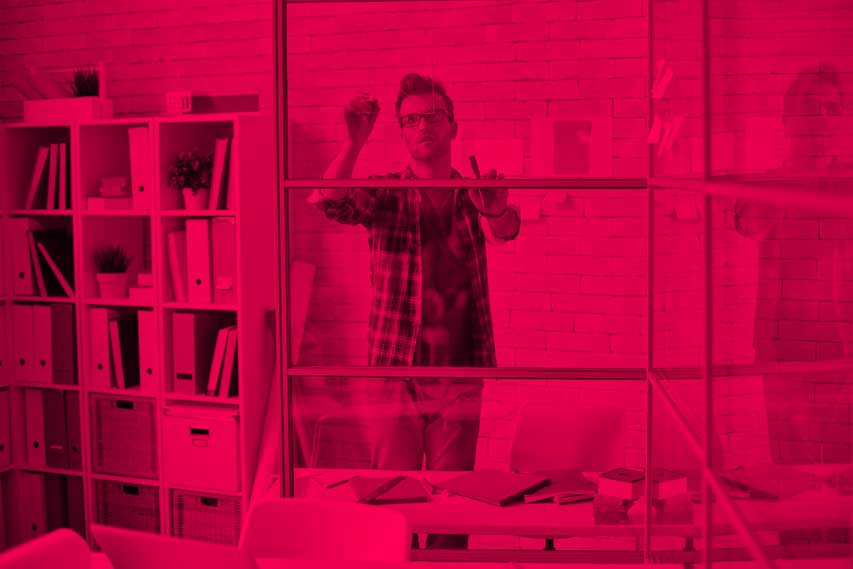‘Looking beyond a film narrative: A visual representation of the drivers of cinema’
My journey to the cinematic world lies in three words, ‘lights, camera, and action’. While scrolling through one of the old photographs in my album I started to think. Think about how certain stories and memories have grown around my first flirtations with films.
It is quite remarkable how significant moments in my life are intertwined with movies. If you ask me, they have always felt a little personal when I learnt to walk, I danced, when I first spoke, I found my way around dialogues and when I saw movies, I sank into this dreamy world. As I grew up my love galore for the magic of cinema, I wanted to experience the technicalities and techniques and decided to seek it further in Hollywood thus beginning my journey.How it all began
I started as a Flame/Smoke Artist back in the year 2000 at Prime focus. Thanks to Yogen Rai sir and Namit Malhotra sir. I was into Finishing, Vfx compositing and Vfx Supervision and strived to excel in the field of photorealism. In the night Shifts I used to assist the main colorist on Lustre and Resolve 2k then. Scanning films and giving a helping hand in ONE LIGHT pulled me towards the grade. My Grading journey started in 2009 with Assimilate Scratch, Resolve and Flame Premium Lustre. A calling of a pleasant city and my questions about the look of films, how to recreate the film looks, and the evolvement of cinema from analogue to digital are what drove me towards researching the “ Hollywood Film Look “ My knack for Film Color Timing brought me to this completely new area of getting back Analogue Color Grading into digital where life threw experiences, people, and more films my way. Film is more than a look. It's lighting, composition, movement, and storytelling. But as a medium, the defining feature of film is color. And this is what we work very hard to capture, the unique color response of film.
Baby steps
Until 2010 I had already worked over hundreds of Features, Commercials and Music Videos as a Senior Flame Supervisor. It took me many years and study in different fields like Compositing, Photography, CG Lighting, Perception, Cinematography, Optics, Color Science and Management, Composition, Technique, History of Art and Storytelling in my quest for Photorealism in vfx. I had to acquaint myself with deep knowledge in the phenomena of light and principles of Film photography and it inspired me towards Film Colors and Textures. With deep knowledge from different disciplines and my research on Kodak.com, my pursuit of traditional filmmaking (negative, positive process and more) and poring over the unwritten rules of film aesthetics began. With more literature came more material aspects of colour.
Did you know, that more than over 230 film colour processes have been devised in course of film history in close connection with photography?
Soon, I learnt about the foreplay of photography and films in colour attributions and aesthetics. This helped me in understanding the relationship between historical film colours and present-day photography.
Experiences and rejuvenation
Just like life in itself, my film Aesthetics and Grading journey wasn’t completely on a path covered in rose petals (a lot of it has been that way though or at least it felt like it). With no solid literature and no senior to guide a temporary Lull had enveloped my life.
I could see no light at the end of the tunnel even when I thought I had crossed my mid-tunnel mark. But as they say, nothing is constant in life, even my time with this ache changed when I came across Dale Grahn Sir, Legendary Color Timer of Steven Speilberg and Francis Ford Coppola who shaped the look of modern cinema who owns credit for over hundreds of major films like Saving private Ryan, Gladiator, Munich, Predator, Minority report, Star Trek, War of the Worlds, Mr a& Mrs. Smith, Hannibal, The Ring to name a few
Here is the link to Dale Sirs work
Dale sir decided to train me and I had to Unlearn everything I had learnt in Grade. My sessions started and sir took me back to the old times of Film Color timing and started from basics. How to see a shot and how to tell what emotions need to be expressed through colors and then color time time a shot. How he color timed a shot. His approach and slowly with each passing day and interaction and sessions I could see my grade change towards the Classic organic way of grading films. I am blessed, fortunate to be Mentored over years by the Legendary Color Timer Dale Grahn
I also incorporated teachings of modern masters like
-Kevin Shaw, Senior Colorist who has worked in around 45 countries of the world
-Josh pines, Color Scientist and vice president of colour imaging R&D: Technicolor Digital Intermediate
-Beverly Wood, former VP of technical services at Deluxe
-Alex Hernandez, operating scanners at Fotokem
-Dado valentic, Senior Colorist and Color Scientist
-Dr. Bogdanowicz, a veteran colour scientist in the field of motion imaging, Two Technical Achievement Awards from the Academy of Motion Picture Arts and Sciences
-Jill Bogdanowicz - Co-Head of Features Color at Company 3. Jill has brought her unique talents to features including Spider-Man: Far from Home, John Wick: Chapter 3, Joker, The Umbrella Academy, and Dr Sleep
-Jason Bowdach, Senior Colorist and Finishing artist
-Stefan Ringelschwandtner, Senior Colorist and Color Scientist
-Nico Wieseneder, Senior Colorist and Color Scientist
-Tobias Wiedmer, Senior Colorist and Color Scientist
Immersion
My film odyssey took another turn and the question that I asked myself were answered when I attended display prep demo classes of Veteran Hollywood cinematographer Steve Yedlin, ASC. The demo alternated between the footage shots on 35mm film stock and Arri Alexa. Let me explain to you, how this works because this is where things get a little interesting.
The demo explores how attributes of an image’s look that is often captured format can be manipulated precisely and individually during preparation for display. That is when you match ARRI to film precisely, you create a motion picture!
I was over the moon when I first experienced the making. The negative-positive model learning and my conversation with colour scientists were now making sense. It was like I completed my colour puzzle. I was overwhelmed! Matching digital cameras to film became a piece of cake for me.
I would prefer a photo to an amazing colour scientist Tobias Weidmar (shout out to you Toby! ) and he would build me these amazing tools for Color grading like the Color Timing Tool inspired by Dale Grahn’s methodology, Printer lights, Split toning, Prime Light and an Independent Color management system and more.
I, later on, met Nico who is a genius and who has done some amazing work in Film Print Emulation. He deconstructed the entire Analogue film and reproduced characteristics that he associated with film aesthetics. Many thanks to him
Another noteworthy name who has done great in depth research on film is Stefan. He reverse engineered the film look. His stride did not just end there, he worked on lens flaws like chromatic aberration, lens distortion, Petzval field curvature, and so on. Further, he recreated special “Film aesthetics” and other texture elements like Halation, Flicker, Gate Weave and Film Damage. He is a colourist who has gone into true depths in his research in Film Print Emulation, perhaps this is the reason he is known Globally as REVERSE ENGINEERING THE GRADE Colorist
Another interesting encounter that taught me about the interplay of colour and light was by Jason Bowdach. A seasoned Colorist, Jason had worked on Films, Commercials and Series. Jason has also done some amazing work in building Pixeltools alongside and is known to build innovative tools. What we indulged in was the Understanding of traditional print stocks and designing of a modern day equivalent of Negative - Positive model, equipped with the specially designed Printer Lights Tool. We recreated the same tool used by Legendary Color Timer Dale Grahn.
One of the reasons for its popularity is that printer points move the signal in their entirety and alter the entire tonal range in the image. This way, we stay true to the way the original image was shot, and the result can be immaculate and cinematic the relationship between the shadows, mid-tones and highlights stays consistent, and the contrast never changes. By using controls that separate tonal ranges such as lift, gamma and gain, we betray the natural relationship between the shadows, midtones and highlights.
Earlier Film colour timing was limited to colour and density balance with an emphasis on the overall scene-to-scene continuity. By this technique, the overall continuity of colour and density is addressed so the integrity of the cinematography does not get distorted. Little things now added more meaning to filmmaking. I outgrew my reach from Film Print Emulation to Film Negative Stock, Positive Stocks, Color, Texture, Lens characteristics, Overlays and much more weaved artistically. And for this, I truly cannot thank my mentors and peers enough.
The big picture: Understanding the interplay between colour and lighting
The lighting composition, movements and storytelling form the heart of films. The reciprocity of colour and lighting is what conveys subtle parts of narratives and sentiments. Another cool element that the picture brings out is the colour timer. With a colour timer one can go and change the look and the colour of the image on film to a point that nobody has ever seen before, or a place that nobody's ever seen before to instil an emotion visually that is crucial to the continuity of films. To top that if they are timed properly we can create emotion and feel with colour. Films and movies are more than the sum of their whole parts. It defines the journey and the learnings gained while walking down the paths rather than a destination. The camera doesn’t give an angle to a shot but to our eyes which changes the perspective to see everything in the world. I am thankful that my enthusiasm kept me working on being better with every picture, with every scene, every shot.
‘The crums of learning made the whole me’






